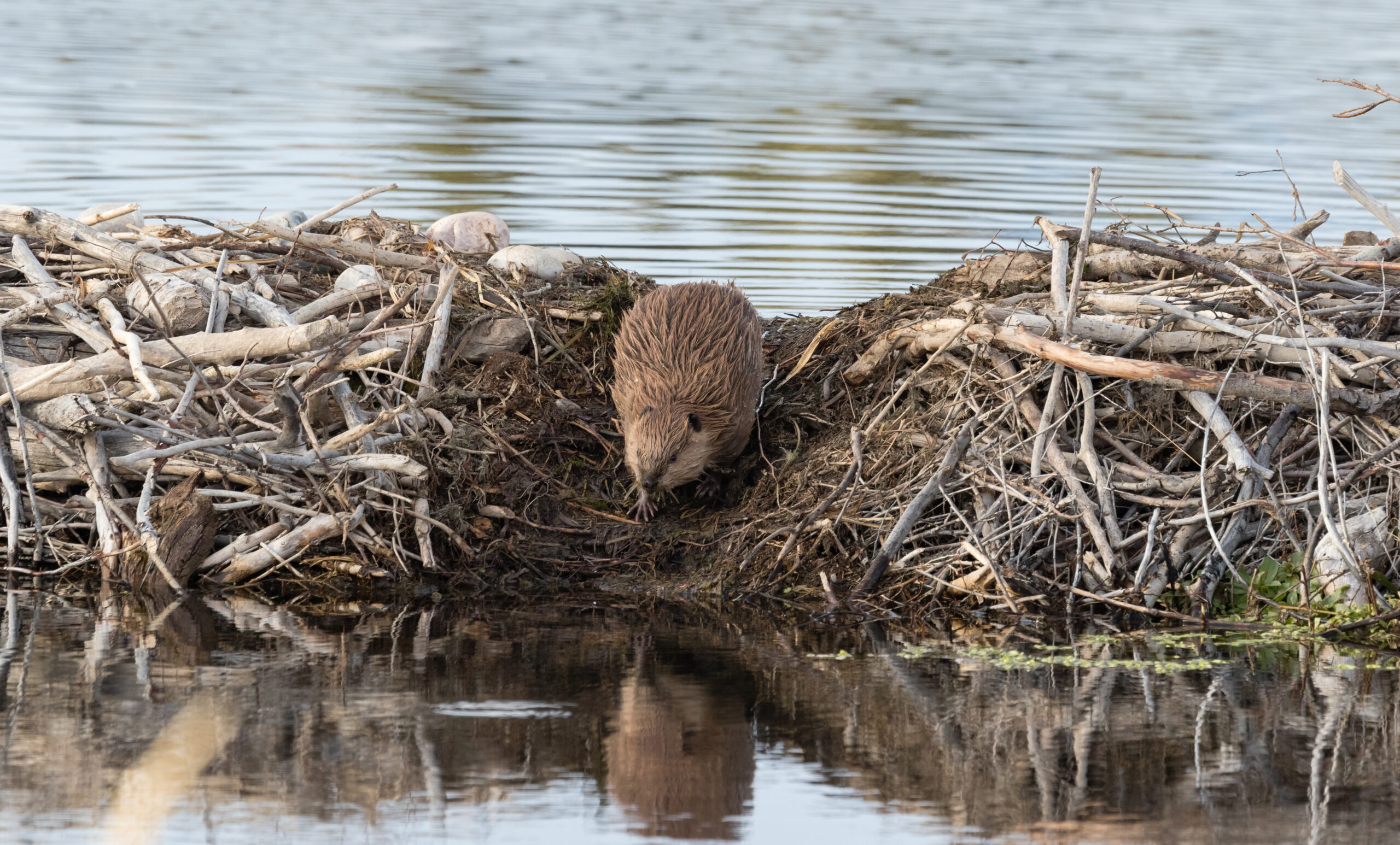Beavers Are Designed to Boost Biodiversity
The beaver may not be the first animal that comes to mind when you think of a favorite. However, as excellent dam builders, beavers seem to attract many other species that thrive in their ponds. Their benefits to others qualify beavers as an indicator species.
An indicator species is any living organism in a habitat whose presence can be used to measure the environmental health of the habitat. A change in the population level or population density of the indicator species reveals a change in the environmental fitness of the habitat to sustain other species.
The most famous indicator species is the North American beaver. I have written two previous articles on how beavers not only prove enormously beneficial for other animals but also for humans, human civilization, and human health.1 For example, beaver dams and canals remove carbon from flowing fresh water, which reduces the accumulation of carcinogens in our drinking water supplies.
Eurasian Beavers
Now, field studies conducted in Germany have demonstrated that the recently reintroduced Eurasian beaver has already significantly boosted the biodiversity and bioabundance of their habitats in spite of their much lower population levels relative to the North American beaver. A team of five ecologists led by Valerio Orazi conducted studies on 1,166 different animal species in Bavarian Forest National Park.2 They divided their studies into three distinct animal habitats of the national park: beaver ponds, river ravines and plains, and forests.
Orazi’s team found that 196 (17%) of the 1,166 species were found exclusively at the beaver ponds. More species in danger of extinction were found at the beaver ponds compared to either the river or forest sites. The number of bird species and the abundances of birds, bats, and insects were higher at the beaver ponds.
The researchers also conducted an analysis of other indicator species. They found eight such species, besides the beavers, at the beaver ponds. They found none at the river and forest sites. They concluded, “Beavers, as ecological engineers, increase habitat heterogeneity in mountain forests and thereby promote biodiversity.”3
Beavers to the Rescue
Biodiversity has steadily increased from the origin of life to the advent of human beings. At humanity’s origin, biodiversity attained 8.7 million eukaryotic species, which is near or at Earth’s theoretical maximum carrying capacity.4 Presently, global biodiversity loss is a severe crisis. It’s referred to in the scientific literature as the sixth great mass extinction.5
Orazi and his colleagues cite studies showing that biodiversity loss is especially severe for freshwater communities.6 Since 1970, the global abundance of freshwater species has declined by 84%.7
Beavers are the only known nonhuman dam builders in the animal kingdom. Beaver dams convert terrestrial habitats into aquatic and semiaquatic ecosystems. Beavers fell both small and large trees. This tree felling increases landscape heterogeneity, which, combined with the creation of dams, lodges, and ponds, results in a dynamic mosaic of diverse ecological features. For all these reasons and demonstrated field study results, Orazi’s team asserts that the expansion of beaver populations in Europe should be strongly supported as an effective and inexpensive biotic restoration tool.
The beaver is an amazing animal. The phrase “busy as a beaver” reminds us of the importance of a strong work ethic. The beaver also reminds us to look out not only for ourselves but also for the needs of others.
Thousands of years ago, Job declared, “But ask the animals, and they will teach you, or the birds in the sky, and they will tell you” (Job 12:7). As the rest of the book of Job explains,8 God designed mammals and birds to teach us important lessons about ourselves, about God, and our need for a Savior. Thanks to past and new research, beavers are becoming a vital part of these lessons.
Endnotes
- Hugh Ross, “Benefits from Beavers,” Today’s New Reason to Believe (blog), Reasons to Believe, February 1, 2012, https://reasons.org/explore/publications/articles/benefits-from-beavers; Hugh Ross, “Thank God for Beaver Dams,” Today’s New Reason to Believe (blog), Reasons to Believe, February 6, 2012, https://reasons.org/explore/publications/articles/thank-god-for-beaver-dams.
- Valerio Orazi et al., “A Biodiversity Boost from the Eurasian Beaver (Castor fiber) in Germany’s Oldest National Park,” Frontiers in Ecology and Evolution 10 (May 13, 2022): id. 873007, doi:10.3389/fevo.2022.873307.
- Orazi et al., “A Biodiversity Boost,” p. 1.
- Camilo Mora et al., “How Many Species Are There on Earth and in the Ocean?” PLoS Biology 9 (August 23, 2011): id. e1001127, doi:10.1371/journal.pbio.1001127.
- Robert H. Cowie, Philippe Bouchet, and Benoît Fontaine, “The Sixth Mass Extinction: Fact, Fiction or Speculation?” Biological Reviews of the Cambridge Philosophical Society 97, no. 2 (April 2022): 640–63, doi:10.1111/brv.12816; Geraldo Ceballos, Paul R. Ehrlich, and Peter H. Raven, “Vertebrates on the Brink as Indicators of Biological Annihilation and the Sixth Mass Extinction,” Proceedings of the National Academy of Sciences USA 117, no. 24 (June 16, 2020): 13596–602, doi:10.1073/pnas.1922686117.
- Andrea J. Reid et al, “Emerging Threats and Persistent Conservation Challenges for Freshwater Biodiversity,” Biological Reviews of the Cambridge Philosophical Society 94, no. 3 (June 2019): 849–73, doi:10.1111/brv.12480.
- World Wildlife Fund, “Living Planet Report 2020: Bending the Curve of Biodiversity Loss,” R. E. A. Almond, M. Grooten, and T. Petersen, eds. (Gland, Switzerland: WWF International, September 10, 2020): 43–57, https://www.worldwildlife.org/publications/living-planet-report-2020.
- Hugh Ross, Hidden Treasures in the Book of Job: How the Oldest Book in the Bible Answers Today’s Scientific Questions (Grand Rapids, MI: Baker Books, 2011), 119–85.






